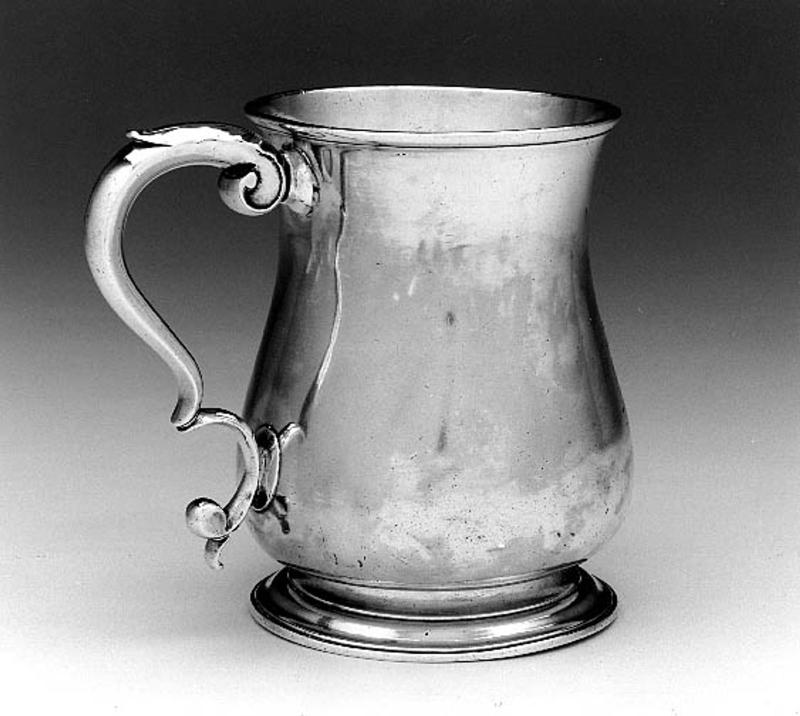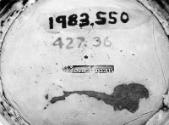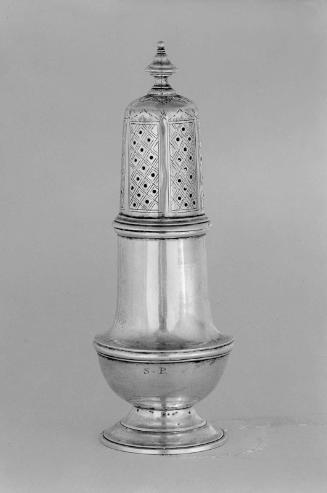Cann
Tradition has held that this cann was owned by the Rev. Edward Holyoke, minister of the Second Church in Marblehead. However, the vessel’s late date has made this attribution problematic, given that Holyoke would have been at least sixty-five years old at the time he would have purchased it from Daniel Henchman. It is possible that the Holyoke’s son Edward Augustus Holyoke bought the cann or that Holyoke purchased it for his son about the time of the latter’s marriage, in 1759.
A graduate of Harvard College in 1705, Reverend Holyoke served as tutor from 1712 to 1716. Soon after, he was voted pastor of the Second Church in Marblehead, where he served until his appointment in 1737 as president of Harvard.
Despite the lack of surviving tutorial silver that should have marked his tenure at Harvard, it is known that Holyoke owned several pieces of domestic silver. A Jacob Hurd teapot was said to have been given upon Holyoke’s second marriage in 1725 to Margaret Appleton. Shortly after and upon his departure for Harvard, the Marblehead church presented him with a tankard by John Coney, possibly one already owned by the church and engraved with his arms. All three bear the Holyoke arms, as seen on this cann. An early porringer by Coney simply bears the initials “E H” and was most likely purchased by Holyoke shortly before embarking on his pastorate in Marblehead. A third Coney piece, a large and early caudle cup of about 1690 bearing later arms, was probably owned by Holyoke’s father, Eliazur, and descended to him.
Nathaniel Hurd may be the engraver of the splendidly arrayed Holyoke arms on this cann, as Henchman had married Hurd’s sister Elizabeth in 1753. Their collaboration is firmly documented in a commission for another college president — a silver monteith made in 1771 for the Rev. Eleazer Wheelock, the first president of Dartmouth College. The monteith bears Henchman’s mark and Hurd’s engraved signature.
This text has been adapted from "Silver of the Americas, 1600-2000," edited by Jeannine Falino and Gerald W.R. Ward, published in 2008 by the MFA. Complete references can be found in that publication.















